Tips For Planning Ahead To A New School YearIt may seem crazy for some teachers to be talking about preparing for the new school year so soon, but for other teachers, your summer break is already half over. If you are anything like me, your mind is already thinking about how the new year might look, what you want to do in your classroom to make it fresh for your students and yourself, and what resources and materials you might want to start gathering. You may even be thinking about ways you will build classroom community and set up the rules and routines. Here are 6 tips and ideas that can help you prepare for a successful year. 1. Give your classroom a fresh lookChanging up your classroom arrangement and giving it a fresh look can help you to feel refreshed and ready to begin a new year. In our district, we get our former students for the first week of school as the numbers are tallied and the classes are formed. Even though we try to organize things before school ends for the year, there are always changes in the fall. New students come, some students move away, some go to online instruction, etc. These all affect the numbers and how they are distributed throughout the grades. Once the classes are organized, kids are moved into their new classrooms. Usually, some remain because of all the split grades. Changing up the room and giving them special roles help them to feel like they are important and not missing out. Do you change up how the room looks or add a new decor to your room? If you are looking at adding some color to your room, you might want to check out my rainbow set. It has many different elements in it to make your classroom look cheerful and ready for a new year. I have created an English and a French version so that it will work in French Immersion or core French classrooms as well. 2. Use ice breakers to build classroom communityBuilding a classroom community will help with gaining trust and respect in the group. This is an important part of creating a caring and successful learning climate for the students. There are many different ways to build community. We will look more at this another time, but for now, here are a couple of ice breaker type ideas that might help with getting started. Getting to know each other is an important part of developing class community, so I like to do many different group activities and partner games to mix up the kids and help them to learn to work together with others. Here are a couple of the activities I have used in the past along with a twist to make it a bit different. Find Someone Who Find Someone Who is a well-known icebreaker that is used in various forms. This is my newest version. It is more extensive and can be used for getting to know classmates better. There are interview questions for the 5W and there is also a game component where teams can work together to guess who the person interviewed was. Check it out by clicking the image. If you would prefer a simplified version that is a fast icebreaker, I have made another version that just asks a couple of questions. Click the image to get your free copy. inside/outside circles Choose a topic and have the one circle share with the person they are facing. Then switch roles. This is a great way to learn information about several others as you can continue to have one circle move so that the partners keep changing. You can ask the same question multiple times or you can change up the questions to find out more information. Choose questions that will guide the conversations to learning more about the class members. Ipad glyphs Here is a great way to combine getting to know each other and math. Each glyph has different information on it depending on the likes and interests of the person creating it. After the glyphs are completed, many different questions can be asked for analyzing the data. 3. Have some classroom management strategies plannedClassroom management is an important part of teaching. There needs to be some sort of classroom routine, structure, or rules that are agreed upon in order for good learning to happen. These can be given, mutually developed, or a combination of the two, but they should be established during the first few days so that they can be practiced and followed as soon as possible. I found that using a t-chart for creating some of these routines worked well. Here are some that I used. Classroom rules and manners posters can also help to remind the kids of expectations. Here are some that I created for the primary classroom. There are a couple of different patterns available as well as a black and white version if you prefer. 4. Have some quick and easy activities readyThere are often times during the first few days when you are trying to adjust to getting back into the school routine that you may be scrambling to fill in a few minutes here and there. If you have some quick and easy activities or brain break games ready, you can just grab one of them to use. This will also help to avoid confusion, management situations, and it will help to keep the kids engaged. 5. Remember to have some funThe temptation may be to get started on academics right away, but remember that both you and the kids need to get back into a routine. It is important to make sure that you keep the fun in the activities and interject the academics in a way that isn't too intense as you do review or introduce new topics. Taking some time at the beginning to review and engage with your students will pay off later on. 6. Make sure to take care of yourselfThis is actually one of the most important tips I want to share with you. If you want to be able to get through the next year without burnout and stress, it is important to focus on self care. Every year we seem to forget how tiring it is to start a new school year. Teacher tired the first few weeks of school is real. Make sure that you are getting lots of rest. Take some time for you. Don't just focus on your job. Even if it is only a few minutes a day, do something for you that will help you to de-stress and relax. These are just a few ideas to think about as you leave school for your summer break or as you continue to enjoy your summer holiday. Next week I will talk more about back to school ideas and setting your year up for success. Until then, continue to enjoy your summer break. You deserve it. Related Posts
0 Comments
Marathon Of HopeTerry Fox's Marathon Of Hope has been happening for over 40 years now. I still remember when we were shown a movie of his journey. He wanted to go across Canada to raise money. His goal was to raise $1.00 for every Canadian. He ran the equivalent of one marathon each day. It is hard to imagine running a marathon every day with two good legs, let alone with one good leg and an artificial leg. Most people would train for months to do one marathon. That movie really made an impact on me. Terry Fox was around my age and he had his life cut short because of cancer. He didn't feel sorry for himself, but instead put his effort into making a difference. He started the Marathon Of Hope in 1980 and Canadians have been continuing this marathon every year. I remember when it became a yearly event here in our city and our family participated in either the community run or the run with our schools. It is hard to believe that it has been 41 years since he first dipped his foot in the Atlantic Ocean and started his marathon of hope. Terry Fox: A Canadian HeroTerry Fox is a Canadian hero because he didn't think about himself and feel sorry for himself when he lost his leg. Instead, he decided to help others by raising money for cancer research. He endured pain and suffering for 143 days as he ran across Eastern Canada striving to make a difference. Some days were better than others, but no matter how difficult it got, he didn't give up. He had days when he saw very few people and raised very little money, and he had days where crowds came out to run alongside him and volunteers were needed to help gather up the donations. When Terry had to stop due to cancer in his lungs, he still wanted to make a difference. He said, "Even though I'm not running anymore, we still have to try to find a cure for cancer. Other people should go ahead and try to do their own thing now." His Legacy ContinuesThe Terry Fox Run was established in 1981 to continue Terry's Marathon of Hope. September 13th was designated as Terry Fox Marathon of Hope Day. Every September different communities held a Terry Fox run. Schools would choose a day in late September to do a school run for Terry Fox. Whenever we did a Terry Fox run at the school, time was spent telling Terry's story and sharing stories about how cancer has affected many people that we know. It is frightening to think that almost every family has been affected by cancer in some way. After sharing the stories, we chose people to run on behalf of. Posters were made and feet were posted along the hallways to show how we were in this together, even if it was only for one day a year. I created some activities and posters for my students. They are available here. Hopefully they will inspire kids to do something that makes a difference just as Terry did. I hope that you will be inspired to participate in the Terry Fox Run in your area and that you will help others to continue to share Terry's dream and keep it alive. Let's all work together to help stop cancer. For free resources, tips, and ideas, sign up for my newsletter. Related PostsGetting back into the swing of thingsSummer break is over. School is back in session! For some, you have already been in session for a few weeks. For others, this is your last weekend of break. The question on many teachers' minds is "What will this year bring?" Some kids are excited, some are anxious, some are disinterested, and some are unhappy. There are so many emotions during the regular return to school, but with the uncertainty and constant changes last year as we navigated through the unknowns of the pandemic, some emotions escalated. Many kids experienced more anxiety, confusion, and frustration as they tried to learn in new environments and situations, many parents experienced anxiety and frustration as they navigated online and at home instruction, and teachers experienced anxiety, uncertainty, frustration, and burnout as they tried to balance in person, online, and hybrid teaching situations. There was hope that we would be closer to a more normal school year, but things are still changing and we need to be ready to change gears at any moment. This uncertainty is causing teachers stress even before school begins. Many of my teacher friends are still waiting to find out what grade level they are teaching, how many students they will have, and even where they will be teaching. Primary teachers ready to go kitIt is important to have some things ready for any situation to help get through the transitions of the first weeks. You might call it a survival kit. This kit would need activities for various grades, subjects, and configurations of students. The question is, what should be in this kit? Here are some ideas for primary grades. (Some could be modified for intermediate classes, but since most of my teaching was in primary, I have decided to focus on that level for this sample.) Literacy ideas that are ready to goHere are some literacy activities that will engage and provide reading and writing practice for your students. Selections are from various free and paid products. The full products are listed below. Refreshing Idioms Task Cards (sample from the full product) 5 Senses Stories Story Board Fun (activity from Back To School Math And Literacy Ideas) Summer Parts Of Speech (one set of cards from the package) Fall/Autumn Parts Of Speech (one set of cards from the package) Find The Evidence (sample pages) Soundo (part of Alphabet Game Boards) Vocabulary Mandalas (one mandala) Basic Vocabulary Activities ( activities from the product) Quick and fun math activitiesHere are some fun math activities to help your students work on basic math skills. Selections are from various free and paid products. The full products are listed below. Ipad Glyphs (sample from the full product) Pumpkin Glyphs (sample from the full product) Measure Up! (activity from Welcome Back To School) Summer Sports Activity Bundle (activity from the bundle) Measurement Games Team Events ( one event from the games) Number Mandalas Addition and Subtraction ( one of the mandalas) Literacy and Math Game Cards (2 game cards) Science fun and experimentsThese science activities will keep kids entertained while learning about science facts. Selections are from various free and paid products. The full products are listed below. Amazing Weather Facts Posters (freebie) Are You A Rectangle Or A Square (freebie) String Telephones The Clink-Clunk Test Team building activitiesTeam building is important at the beginning of the year, but also throughout the year. Here are some activities that can be done in groups or with partners. Back to School Ice Breaker (freebie) Escape Room What Am I? Vocabulary activity (one activity from the set) Find Someone Who (activity from Back To School First Week Activities) Stumpers (activity from Back To School First Week Activities) What Am I? (sample pages from What Am I?) Self esteem activitiesMaking sure that children understand that they are valuable and important will help to develop positive self esteem. Here are some activities that will help with this. Paying It Forward (freebie) Optimist or Pessimist Task Cards (one set of cards) Goal Setting And Reflections (freebie) Brain breaks and active gamesHere are some active classroom games that can be played as brain breaks or in the gym or outside to provide movement and stimulation between other subject activities. Each of these areas is available as a separate package, or you can get the whole bundle to keep on hand for activities to use throughout the year. It will be helpful when you need to prepare for substitute teacher on short notice or if you just need a quick activity to use. You can find the kit here. As I indicated, this is just a sample of some of the things that could be done. It will be up to you to add your own creativity, experience, and preference to your ready to go kit. For more ideas and resources, you can check out the various categories in my TeachersPayTeachers store. If you are looking for back to school resources, you can check out my recent blog post for resources and tips. I wish you all the best as you venture into a new school year. Note: This resource has been updated and more resources have been added to it. For free resources, tips, and ideas, sign up for my newsletter.
Back To School FunUsing fun activities will make back to school more engaging and exciting for kids and they will probably participate more in the activities. The types of activities that you choose will depend on the age and composition of your class, but there are some that can be used in most situations. The key is to get kids participating and enjoying their time back at school. Getting To Know You ActivitiesGetting to Know You activities and ice breakers are great ways to get started. How many times have you been to workshops where you do activities like "Find Someone Who...." These activities are meant to get you moving around and interacting with others instead of staying with one or two familiar people. It may not always feel comfortable for some, but they may meet someone with common interests in the process. A fun twist to this might be to have the four corners of the room as meeting places and then ask questions that require the kids to choose one of the options and move to the appropriate corner. For example: Do you have brothers? Go to corner 1. Do you have sisters? Go to corner 2. Do you have brothers and sisters? Go to corner 3. Are you an only child? Go to corner 4. If you are interested in some ice breaker mixer cards, check out this freebie. Learning about your students' interests will help with planning and preparing activities that will engage them in their learning. Just like us, kids are more likely to want to do something if they are interested in the topic. I always started the year with different interest profiles or activities that helped me to find out more about my students. There are several kinds of activities available, but these are the ones that I used most often. This is Me booklet (this is part of my basic vocabulary activities booklet) My heart....my passions (likes and hobbies that are later used for writing prompts. It is part of my using five senses and details writing packet) Shield (this can be used for displaying talents) T-shirt (another form of all about me) Team building and classroom management activitiesAnother crucial piece of my start up was creating a great community. Team building is important if you want the kids to work together to have a successful year. They become each other's cheerleaders and they encourage each other when things get tough or when behaviors need to be improved. I did many different activities to make this happen, and I also incorporated classroom management techniques. One of the techniques I started using before retiring was Whole Brain Teaching. This worked well with my kids and I was amazed at how quickly they latched on to the strategies that I used. I didn't get to use it fully, but I was very happy with how the parts I used worked. If you want to learn more about this, you can check it out here. I also created some posters of the rules to use in my classroom. You can find out more here. Bucket filling activities and Acts of Kindness activities were also part of my lessons during those first weeks of school. These were instrumental in helping the kids to think about others instead of always focusing on themselves. Positive Self Esteem And Growth MindsetBy now, you probably know that developing positive self esteem is one of the most important things that I focus on with kids. Positive self esteem is so important when developing self confidence and a positive outlook on the world. It is our job as teachers to help kids see that they are valued and important and that they have much to contribute to the world around them. Having a positive attitude is key for this to happen. In recent years the focus has been on social emotional learning and developing growth mindsets. This has a direct impact of learning. Helping kids to see that they "can" do things and that they are moving forward encourages them to keep trying and they begin to experience more success and their self confidence grows. You can find several resources in my self esteem category and you can read more about optimism and pessimism activities here. Communication is keyCommunication is a key component for a successful year. This communication involves parents, students, and colleagues. All of these types of communication are necessary. Students need to know what is expected of them and they need to know they are accountable for their actions. They also need to know that there will be communication between you and the parents. This communication should be positive and should not be restricted to problems or concerns that have occurred. Successes should be communicated too. It is very exciting for a parent to hear what is going right with their child. Most parents are used to calls being for negative situations. A positive call can make their day too. Communicating with colleagues is helpful for many reasons. Collaborating on common units, getting familiar with concerns about other students that you may encounter when on duty or field trips, sharing of materials and other resources, and agreeing on some common rules and routines are some examples. Back To School FormsOne of the first things I did each year was send home a Getting Acquainted form. I remember being told once by my administrator that kids are precious and parents have entrusted them to us. What better way to acknowledge this than to ask for their input about their child. The Getting Acquainted form also provides valuable information from the parents' perspective which can be helpful during future communication. The other form that I send home is a Home Reading letter. Many parents want to be able to help with their child's learning, but aren't sure what to do. This letter provides different strategies to use when reading with your child. It also helps parents to see that this is something that should be positive for both the child and the parent rather than stressful and a struggle to do. Many teachers have sharing times or special helpers or stars in the primary grades. I used to assign certain days for sharing for small groups of children so that it was consistent and not to time consuming during the morning start-up. This routine also helped children to prepare ahead of time when they knew that their sharing day was coming. For the star or special helper, I changed the person each day. I know that some teachers keep the same person for the week or do some other variation of this, but for me, daily changes worked well. If someone was absent, it was easy to see who was next and make adjustments as needed. I created a set of start up forms for back to school that include star of the day, sharing day schedule, and some criteria forms and examples, as well as the Getting Acquainted note and the Home Reading letter. You can check it out here. First Week Of School ResourcesI have created several first week of school activities that can also be done virtually, if necessary. These activities are an easy startup to math and language skills after summer break. They can be done in any order, and you can select which ones to do. They are available individually, or as a bundle. This is only a sampling of what can be done the first week of school that will provide engagement for the kids and set you up for a successful year. Some Final TipsHere are a few final tips to think about. • Simple management things will help you keep your sanity. For example lining up routines, how to walk in hallways, rules for working in small groups, etc. • Focus on the positive, not the negative. It can be exhausting to constantly redirect those who choose to misbehave or distract others. When you focus on those doing what is expected, often it will encourage other to follow suit. • Everyday is a fresh start. This goes for students and for YOU. • Have fun with your students and share stories, anecdotes, etc. with them. Enjoy your time together. If you are looking for some activities and resources that are free and fun to use, sign up for my newsletter.
Returning To SchoolThe first week back at school can be different things for different kids. Some dread returning, some are scared, some are excited, some are nervous, and some don't really know what to feel. We need to be aware of all these different emotions and find ways to help each child feel comfortable and excited to learn. This won't be easy, and there may be some kids that take a while to adjust, but it is a goal that we should aim to achieve. If kids are eager to learn, it makes life easier for the teacher as well. It can be challenging to motivate and encourage kids if they don't seem to be interested and they resist participating. Tips To Make The First Week Back PositiveThere are many different things that you can do to help make the first week back positive and help the kids to engage in their learning. Here are a few suggestions. Use games and ice breakers to help kids to get to know each other and work together as a team. This may be uncomfortable for some of the kids, so be aware of this and try to relieve some of the anxiety or lack of comfort by pairing them with someone they know, or by being their partner or team mate. Make sure the activities are low pressure so that they can be fun, but not too stressful. If you have kids that were with you last year, give them roles of leadership and allow them to help guide the new kids through the rules and routines and be "the teacher" sometimes. Have them buddy up with some of the others who may be feeling nervous or anxious about joining in. Summer AdventuresI often had my students write about their summer holiday and all the adventures they had. But, as I learned that summer break is not always a happy time for some kids, and it is something that they may not feel comfortable sharing about in a written activity or an oral sharing time, I made some adjustments. I started to share some of my summer adventures with my classes and then do a quick written summary example with them. I then gave kids an option. If they wanted to, they could share their own summer adventure. If they found this difficult, they could write an imaginary story of summer adventures or they could write about another topic. The goal was to get them back to writing so I wanted them to have options that would work with their experiences. Team Building And Developing Positive Self EsteemGetting the class to become a team and learn to work together, is really important if you want to have them develop trust and respect for each other. There are many ways to do this, but I feel that the most important piece is creating positive self esteem and a caring attitude towards others. There are many activities that can be done to help make this happen. I often begin my year by teaching about Tigger and Eeyore and how they view the world. We look at the difference between optimism and pessimism and how that can affect our day. I created some optimist/ pessimist task cards that allow the kids to talk about different situations and how they can react positively or negatively in them. Once we have learned about optimism and pessimism, I talk to the kids about attitudes and how important they are. I use the phrase, "Attitudes are contagious. Is yours worth catching?" I like to have this posted in the classroom as a reminder when lots of complaining happens. Success Words, Bucket Filling, And MoreDeveloping self confidence and a belief in oneself is necessary if one is to feel successful and valued. There are several different things that can be done to help with this. Name acrostics, all about me activities, and talent shields are some examples. One of the activities I like to do is "success or power words". It is amazing how these words can become so powerful when they are a focus. Many of my students would find things that said "believe" and point them out to me when they learned that it was my power word. I even received a couple of gifts that had the word on them. You can find out more here. Bucket filling activities are also a great way to help kids to see how they cause others to feel based on their words or actions. I remember sharing stories with my class about different situations that happened to me. One time my daughter had her young children talk to me on the phone because they needed reminders to fill buckets instead of emptying them. They immediately changed their behaviors. (Was it the bucket filling reminder or was it wanting to please Grandma? Does it matter, it worked.) I like to tie in Acts of Kindness to bucket filling. They complement each other nicely. It is great to see the kids focusing on others instead of themselves, as well. Brain Breaks And MovementMake sure to include some brain breaks and movement activities during the day. Remember, if we get exhausted the first week back, kids do too. They have been away from school for a couple of months and they need to readjust to sitting and doing activities for several hours of the day. Each Day Is A Fresh StartKids need a reason to want to be at school and learn. If they have a cloud of negative behavior following them around, it is hard to feel motivated to try again or to improve. It is important to allow them to have a fresh start every day and to recognize the improvements in both attitude and behavior. We would want a fresh start and maybe even a do over, so it makes sense to provide this for our kids. This has been my policy for many years. I also find that if I don't look into the history of a child or get the low down from previous teachers immediately, unless it is related to a health or safety issue, or an IEP, I get to form my own opinion of the child and they have a chance to start with a clean slate. I learned how valuable this was a few years ago when I had a child with behavior issues that I was unaware of and after 3 weeks in my classroom, his mother commented that it was the longest he had ever been in a regular classroom. At this point, I did check into his history and I learned of some of the issues, but because we had already built up a relationship and he had not exhibited huge behavior issues, we were able to have a successful year. I did have to make some adjustments to different assignments and allow him to have some flexibility in his learning style, but it worked. Have Fun With Your StudentsHave fun with your students and let them into your world. It is important for them to make a connection with you. I find it interesting to see how they react to some of my personal stories about my family, my pets, and my adventures outside of school. They often have wonderful connections and they love sharing them with me. Years ago when I first started teaching, I was told not to relax and smile at first. It was thought that it would be easier to maintain control and manage the class this way. I learned that it was better to share a part of me and build the relationship immediately. Kids want to feel included, not managed. Enjoy being with your students and they will respond accordingly. I hope these tips have helped and that you will have a wonderful year. Next time I will share some resources and activities with you. In the meantime, if you are interested in getting some free resources, sign up for my newsletter.
Back To School Insights For The New YearBack to school time is approaching. For some of you, summer break is over and you are heading back to school. For others, you have another month to go. Of course, as teachers, many of you are already thinking about the new school year and some of the things you will be doing. I hope you have had time to rest and recharge and that you will have a renewed energy and motivation to get started again. After an exhausting and unprecedented year of teaching through a pandemic, it will be great to return to the classroom again and back to some of the familiar routines and activities. Here are some insights and suggestions that I hope will help you based on what I have learned throughout the years. Returning to school this fall will be a bit different since it is at the end of a very difficult year teaching during a pandemic. There will still be some uncertainty as to how things will progress. Will there be another wave, more online or hybrid teaching situations, or extra precautions needed in the physical classroom? Hopefully not, but we still need to be somewhat prepared. Take what you have learned from teaching virtually and use the good parts to enhance your in-person teaching. Have a plan for teaching using a mixture of in-person and online activities. That way, you can find a blend that works with the current situation. It may not be as overwhelming that way. Many teachers have decided that they will continue to use digital resources in the classroom to supplement their teaching this year. Preparing For Back To SchoolSetting up a special classroom environment for teaching is not necessary, but it will definitely make a difference to both the kids and you if it is inviting and well laid out. Just like people are attracted to different homes and designs when choosing a place to live, kids will have an emotional response to their classroom environment. I know it is not always easy to get into the room ahead of time and do decorating and arranging, but even small things like pops of color, desk groupings, messages on the board, and special centers will help create a positive atmosphere. Once school begins, the kids can perhaps help with adding special touches to the class decor. Getting Ready For The First DayEvery school and district has it own way of getting classes organized and ready for the new year. In our district, the classes are determined by the numbers of students enrolled and a class size formula. That means that the classes are not finalized until the end of the first week of school. Instead of forming classes and then restructuring them all after a few days of school, the standard process is to have students return to their classes from the previous year. New students are added to classes of similar ages/grades. After the numbers are finalized, new classes are formed and the whole school is shuffled on the same day. This process works, but it does require some extra planning when deciding on what activities to do, what the classroom set up will be, and how to make the new students feel welcome and included in a class that is already familiar with rules and routines. When the reconfiguration is done, some students will move to different classes and some will remain in the same classroom. It is important that they feel special if they are staying with you. I will elaborate more in the next blog post. School Rules and RoutinesIt is important to know what your must have rules are for the classroom and also which ones are flexible. During the first few days of school, if you are still not in the final class configurations, some of these rules can be introduced and practiced right away. Regardless of the different groupings, school rules can be introduced and practiced. There are different ways of doing this. One practice that we have used in the past, is to create family groupings of mixed ages and have them rotate throughout the day to different teachers for lessons on specific rules and expectations. That way, every student is getting the same instruction and information for each expectation. Another method is to have a school wide chart of expectations posted in each classroom and have the assigned teacher go over each of the expectations with his/her class. Or perhaps, buddy classes could combine to do these lessons. Remember Self CareIt is important to remember self care as you return to school. Get lots of rest and give yourself some slack. I remember how exhausting the first few weeks of school was. Even though you intellectually know it will be tiring, it still comes as a bit of a shock when it actually happens. Being well planned will help you to get through this. Brain breaks and physical movement will not only help your students as they adjust to being in school all day, it will give you a mental break and perhaps help you to get through the day better as well. Next time I will focus more on the first week of school and ways to start the year off positively. Related PostsTime for a well-deserved breakThe last year has been one of the toughest and most unusual teaching years for most teachers. Surviving a year of uncertainty, constant change, strict protocols for engagement and contact, and a pandemic has been a challenge. It is now time to take a more than deserved break to relax and recharge. So many questionsAs we headed into the school year last fall, there were so many questions and concerns about how to make all of this work. Nobody knew what to expect and teachers were constantly adapting and changing their teaching styles, lessons, and means of sharing information and ideas with their students. They had to learn to teach digitally, in person, and in hybrid situations and still engage students and help everyone to feel safe. You made it!Well, my friends, you made it. It may have been ugly at times, and you may not have felt the same joy and satisfaction as in other years, but you need to congratulate yourselves for making it through the year and doing the best you could under the circumstances. Being retired, I was on the outside looking in most of the time, listening to my colleagues and teacher friends share their experiences and difficulties, but I did get a bit of the experience with how difficult it is to teach online. My husband and I spent the last several months trying to teach our ukulele students on Zoom. I have to admit, it was very unsatisfying, and we just learned that it is not always a very reliable way of assessing how the kids were doing. Because we were not able to actually hear the kids in a group situation, we had to trust that they were playing correctly and that they understood what we were showing them. We struggled with screens freezing, kids turning off video, kids saying they were playing, but weren't really, and many other things. When we had them send in videos of their pieces for a virtual concert, we discovered that they didn't always know their own parts, and that they were struggling more than they let on. Luckily, some of the restrictions were just relaxed and we were able to do some one on one sessions this last couple of weeks and fix some of the problems and salvage the season. Looking aheadI am sure that many of you are looking forward to returning to a more normal teaching situation in the fall. Here's hoping this is true and we can move on. For the next few weeks I will be focusing on getting ready for a new year and providing some tips and ideas for classroom management and the first weeks back at school. For now, relax, refresh and enjoy your summer break. You deserve it. Related PostsAs we are about to begin a new year, it is a great time for a fresh start. This year we have all had many challenges and we need to find some renewed energy and hope. Sometimes that can be a breather just to take time with family, or maybe it could be changing things up from the regular routine. I don't know about others, but I found it difficult to get motivated lately. Even though it is supposed to be a festive season, most days seemed to be the same and it was hard to find moments of anticipation and joy. So many of the things we look forward to at this time of the year were missing due to the pandemic. For many of my teaching friends, the challenges of teaching during a pandemic have been daunting and they are rapidly burning out and feeling overwhelmed. I hope that the holiday break has given them some time to relax and recharge so they will be refreshed for the start of the new year. This next season will probably be a mix of online and in person teaching and learning as we continue to get through the pandemic. Here are some ideas for starting out the new year. Hopefully these will bring some laughter and smiles to your day and give you some joy as you return to teaching. Do a photo booth. If you are teaching in person, you could add some New Year's hats and blowers, fancy glasses, etc. Have your students create fun poses and take photos of them and then have them write about their goals. If you are teaching online, you could create some interesting picture frames and then take screenshots of your students and add them to the frames. If they have some fancy accessories at home, perhaps these could be added to their images. If you are looking for materials to help you through the winter season, here are some that might work for you. Sight word games and activities, word work, parts of speech silly sentences and other literacy games can be fun when they have a winter theme. Here are some literacy items in French in case you need them. Here are some free products that might help. New Year's Goal Setting Templates 3 Stars and a Wish Snowy Days Compound Words Winter Sports Task Card Templates Goal setting for the New Year Goal setting is not only good for children, it is also good for us as teachers. Think of some things that you are proud of and things you would like to work on (3 stars and a wish) Come up with a goal for home, school, and something personal. This is the same format that can be used with your students. If you are looking for some novel studies that are good for the winter season, try these. Creative writing ideas Start a statement and see how many crazy ideas you can come up with. (This could be done orally first, and then developed into a written story.) I was so frozen my fingers were like popsicles but they didn't taste as good. I was so frozen ......... It was so cold ........ When I woke up I couldn't believe my eyes.......... If you are looking for some winter math ideas, you can find them here. I hope you find these suggestions and resources helpful as you return to teaching in January.
Thank you for all you do for your students. It was 40 years ago that Terry Fox began the Marathon of Hope Run. This run continued after Terry died in 1981 as a tribute to what he had started and it has raised so much money for cancer research. Here is a repeat of a blog post from 2 years ago. I feel very strongly about this, so I felt it was important to bring it to the forefront again. The Marathon of Hope began many years ago when Terry Fox was a young man. He lost his leg to bone cancer when he was 18 years old. On April 12, 1980 he started his Marathon of Hope for cancer research. He was determined to run across Canada and raise $1.00 for every Canadian. He began his run on the east coast by dipping his foot in the Atlantic Ocean. Terry ran every day for about 42 km (26 miles). Imagine running a marathon distance every day. This is hard enough for someone with two strong legs, but Terry did it with a prosthesis on his one leg. He did this for 143 days. Terry Fox was unable to finish his Marathon of Hope. On September 1, 1980 he had to stop because cancer appeared in his lungs. He returned to his home and began treatment for the cancer. He was determined to continue fighting. On June 28,1981 his battle ended. He was no longer with us, but his legacy continues on. Every September cities across Canada and worldwide run in Terry's memory to continue his Marathon of Hope. Click here to find out more about Terry Fox and his Marathon of Hope. Here are some free activities to use with your students if you do a Terry Fox run in your area. I know it is very important in our schools and children still learn about our Canadian hero. Click on the image above to get your copy.
Using glyphs for math activities is engaging and very useful when teaching about data. Glyphs are not just pictures. They give informative data about a variety of topics. One picture can provide insight and data for comparing, classifying and counting activities. This can be a great way for sharing details about individuals anonymously as well. I used glyphs often in my class throughout the years. It was especially fun to use them when preparing for student led conferences. Sometimes I did activities that were interactive with the child and parents. Then we would look at the glyphs later as a class and work with the data. I found using glyphs to be valuable when sharing details about my students anonymously with others. Nobody knew who created the glyphs, but there was lots of information on each of them. These baby blocks were done during one of my conferences. The kids were excited to learn about themselves as babies and it was fun to make comparisons as a class the following day. Back to school is a great time to introduce glyphs. Bookmarks and name plates can be glyphs. All about me activities can also be done with glyphs. Here is one that I created that might be fun to try at the beginning of the school year, especially when we are possibly using more technology than usual right now. Glyphs can be seasonal as well. I like to do one with pumpkins in the fall, turkeys around Thanksgiving, and snowmen in the winter. These are just a few suggestions. There are so many different topics that can be used. Creating the glyphs can be fun, but in order to really appreciate their value, it is important to see what data they provide. Sometimes I ask the children to come up with the questions that could be asked, other times, I will provide a list of questions and we will find the answers together. Here are some sample questions that might fit different symbols and what they represent. Here is a blank form that I would use when generating questions with my students. I sort the questions out into 3 categories: counting, classifying, and comparing. These different categories provide so much information. The children are always amazed at how much a simple picture can tell. These are all included in my Steps and Templates For Creating Glyphs. Sign up for Diamond Mom's Treasury email list and get your free copy. You should really give it a try. I am sure your students will be amazed at some of the information they learn through this activity. Subscribers have access to all products on my free resources page. Don't wait, sign up now and get your free resources. Related Posts
|
About Me Charlene Sequeira
I am a wife, mother of 4, grandmother of 9, and a retired primary and music teacher. I love working with kids and continue to volunteer at school and teach ukulele. Categories
All
|
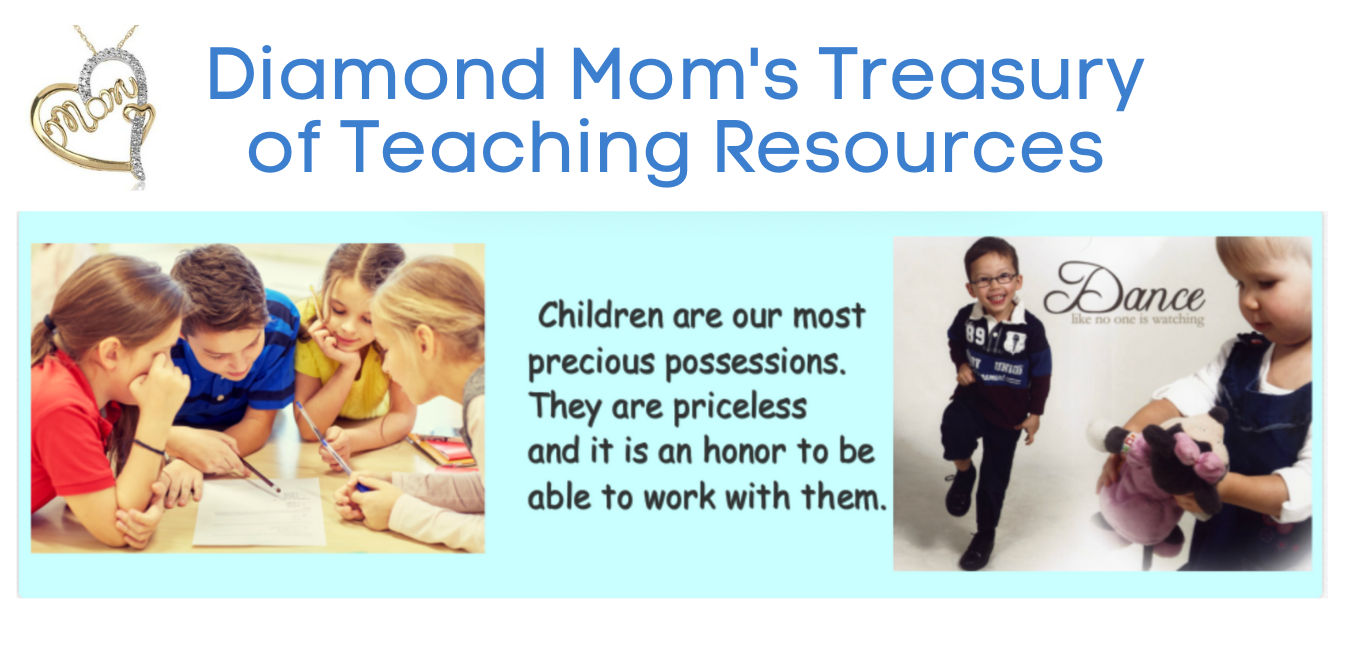
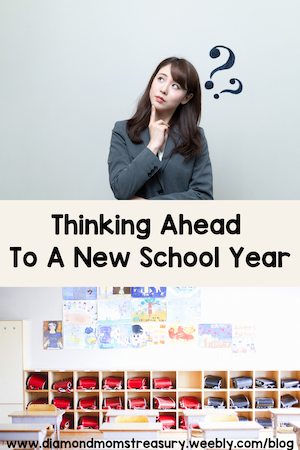
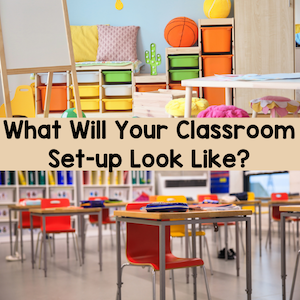
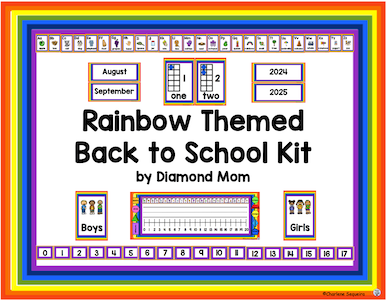
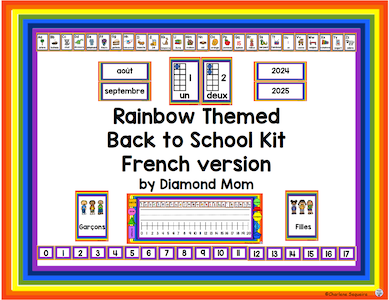

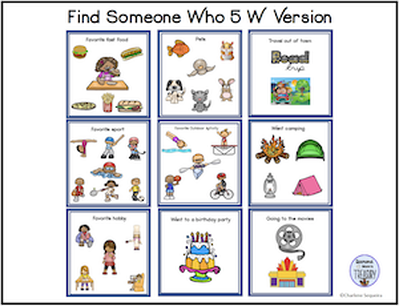
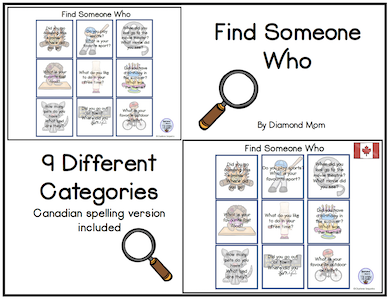

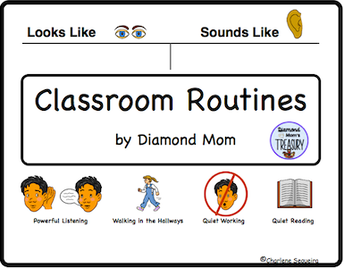
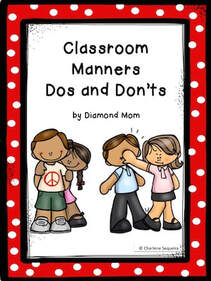
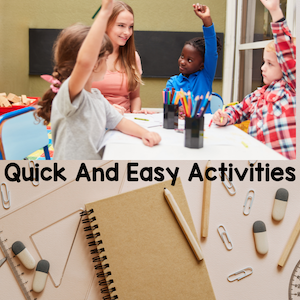
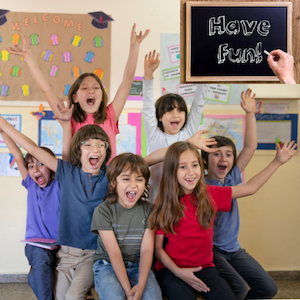
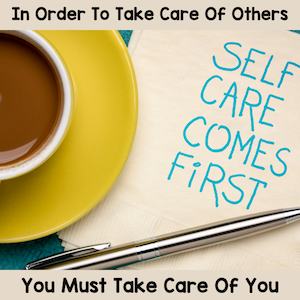
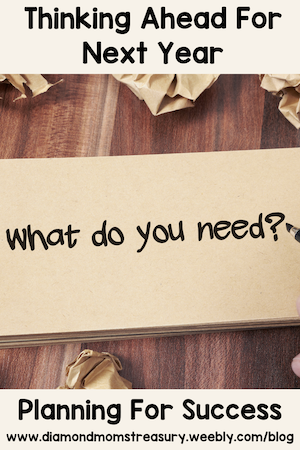


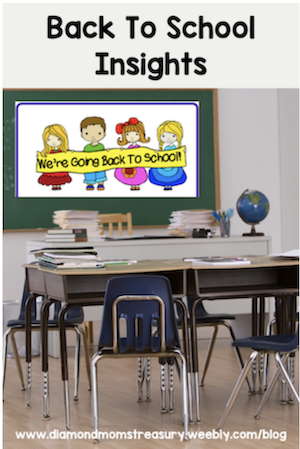
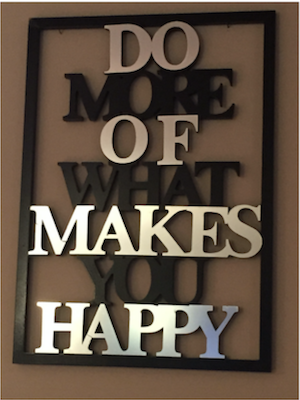



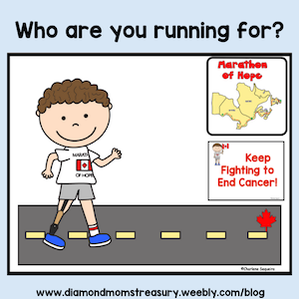
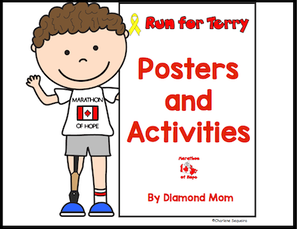



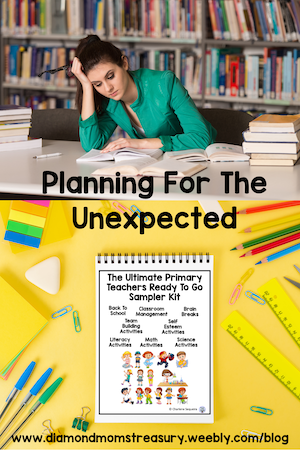
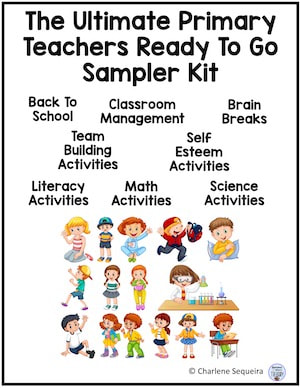
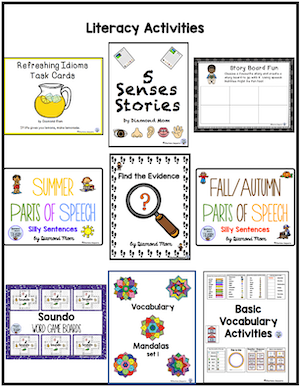

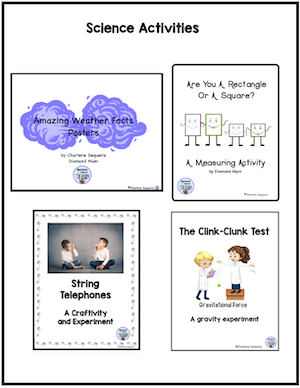

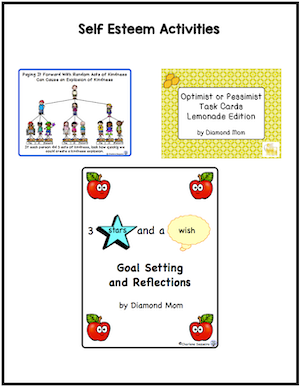

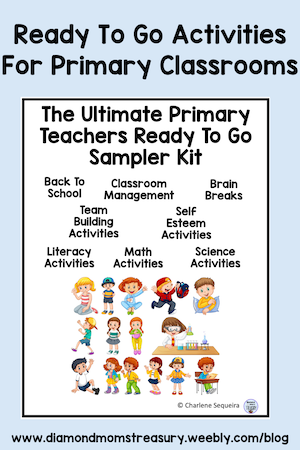

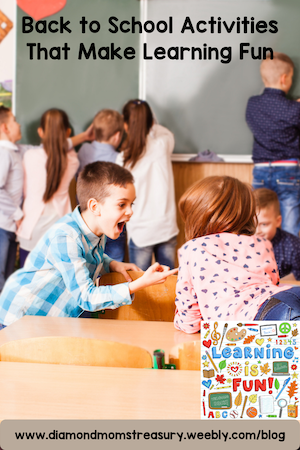

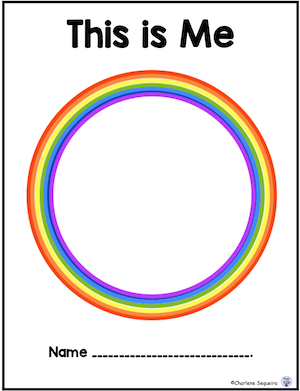
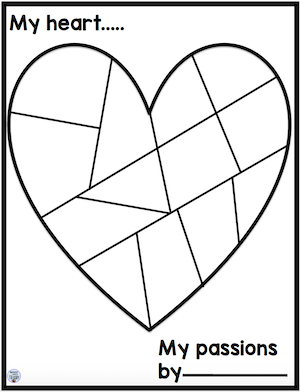
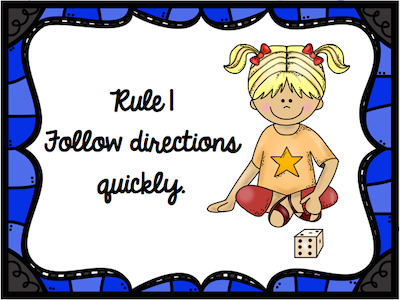
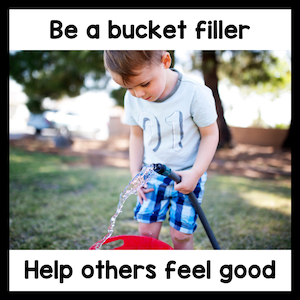
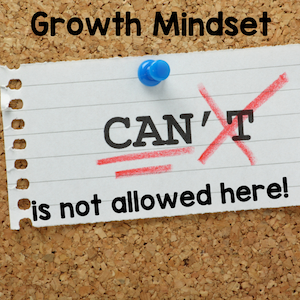
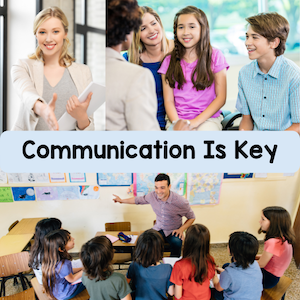
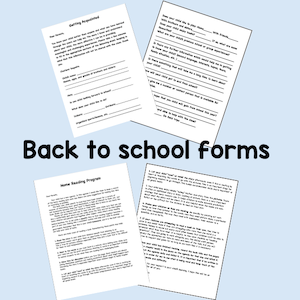


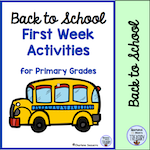

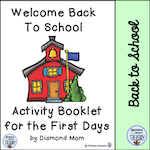

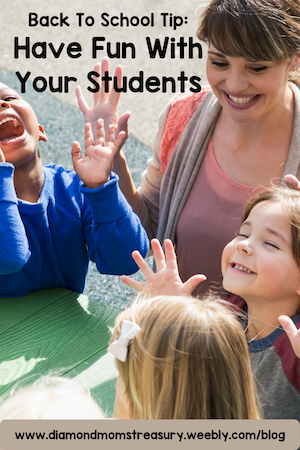

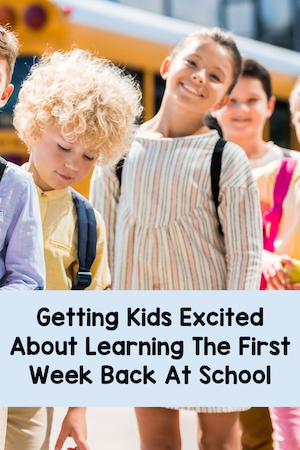
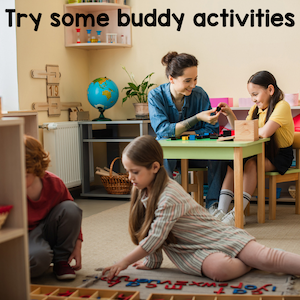
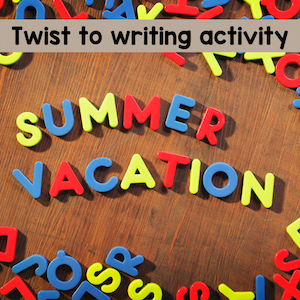
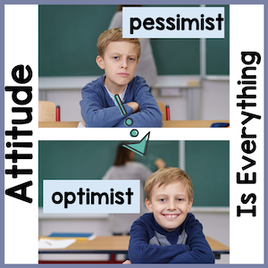
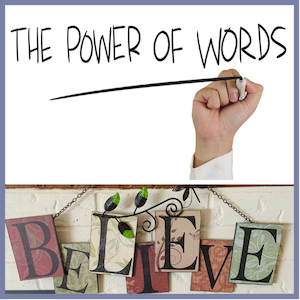
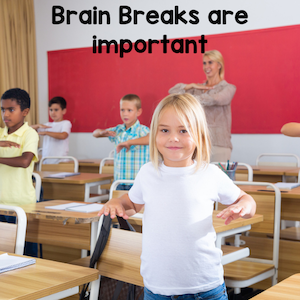


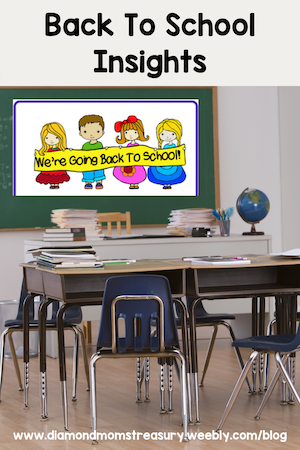
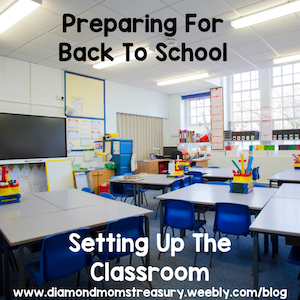
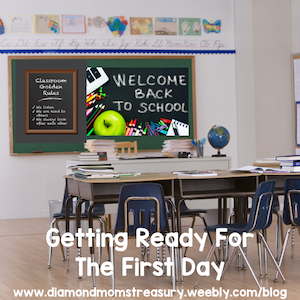
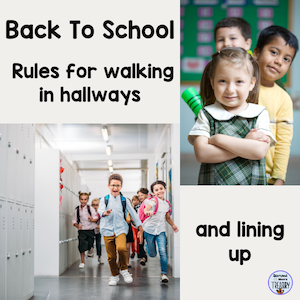
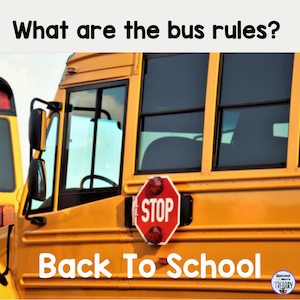
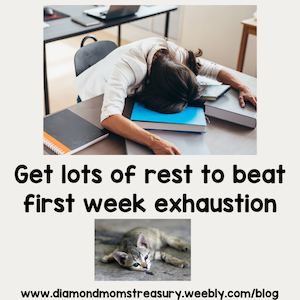

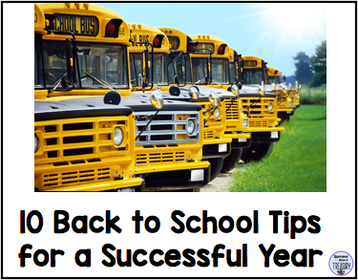


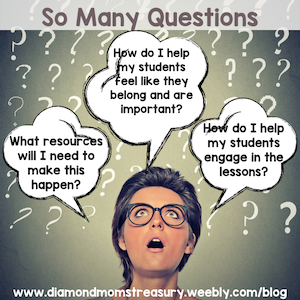

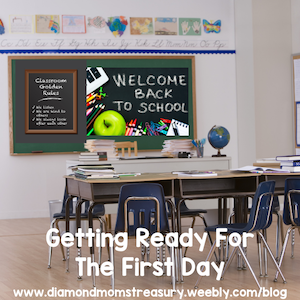
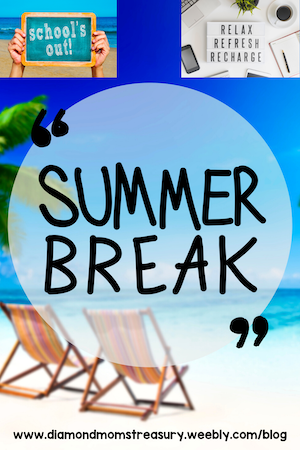

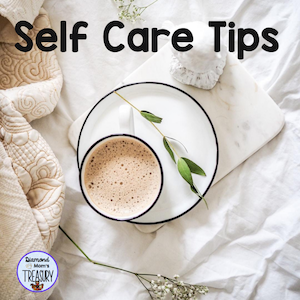
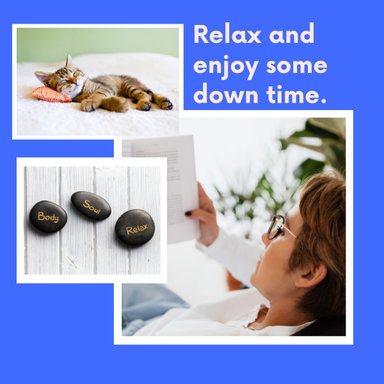

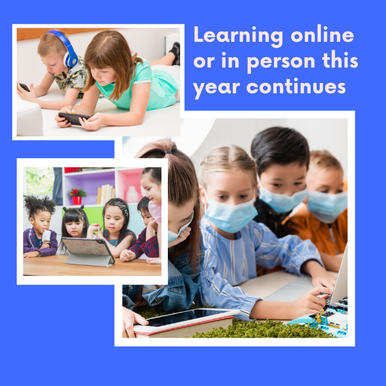
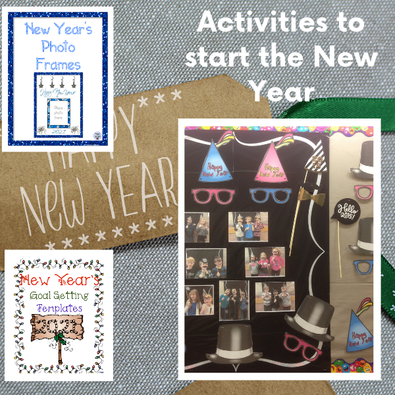
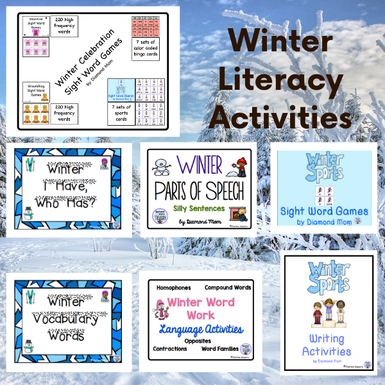

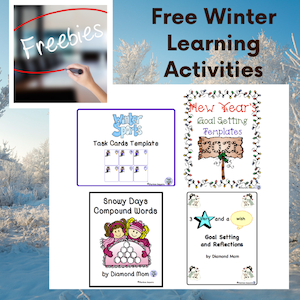



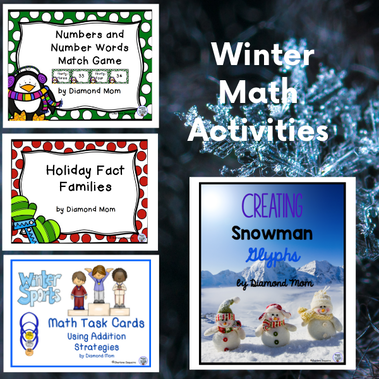







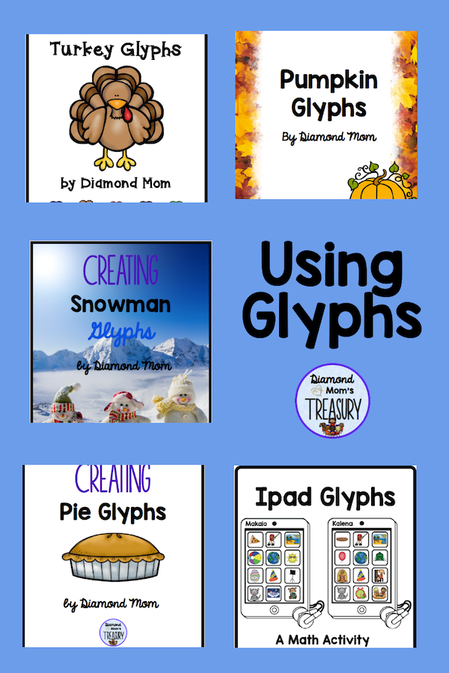
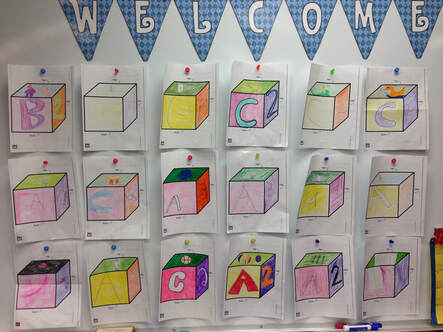
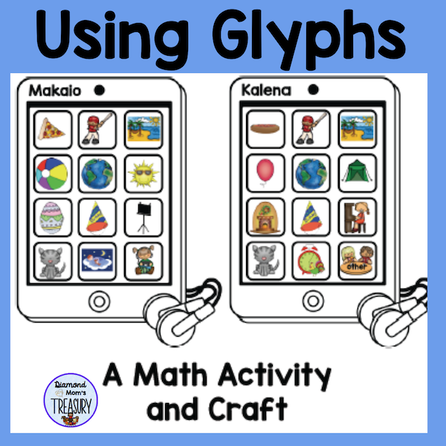
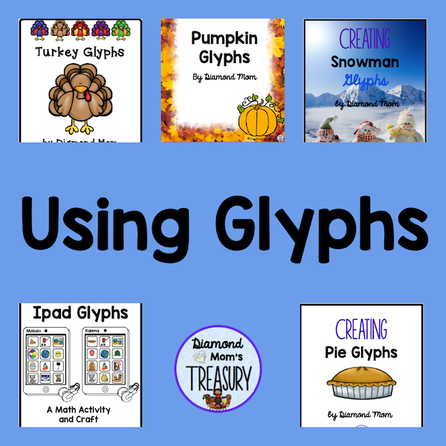
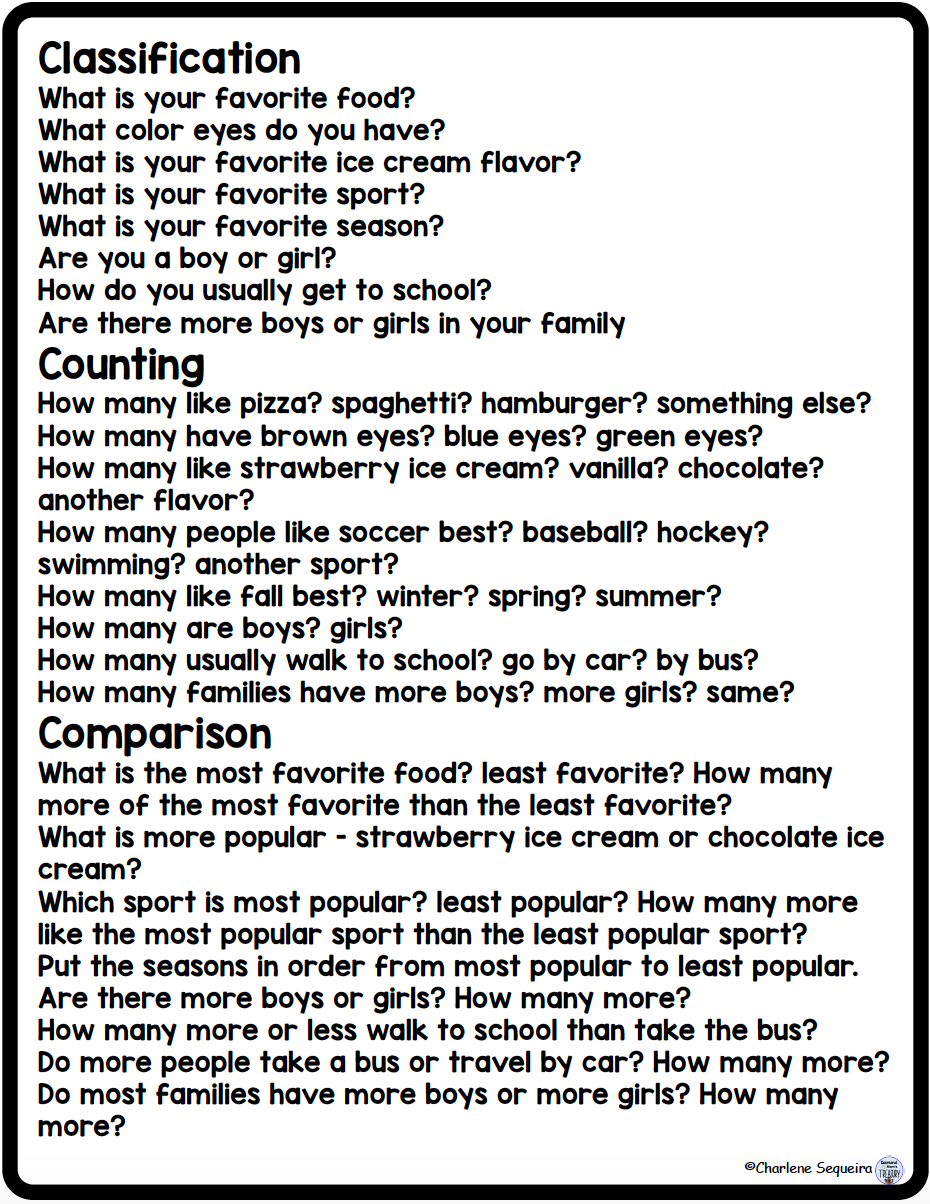
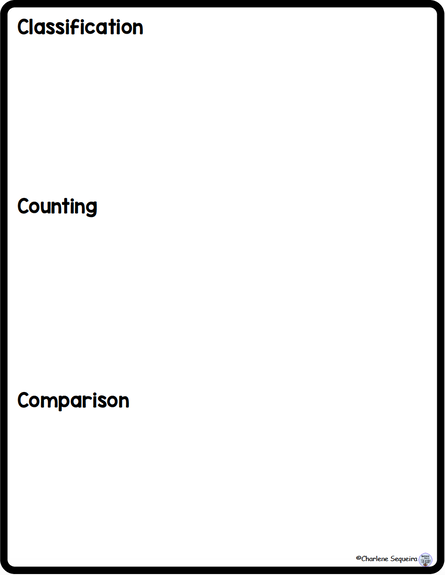
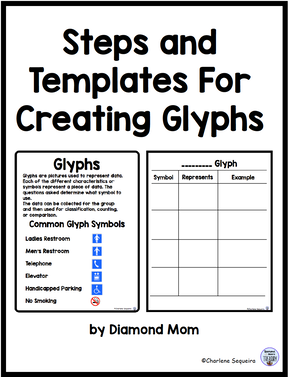

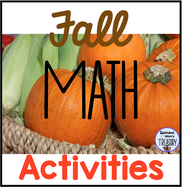
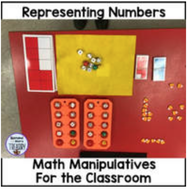
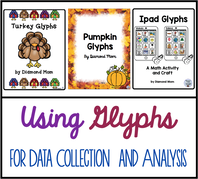



 RSS Feed
RSS Feed